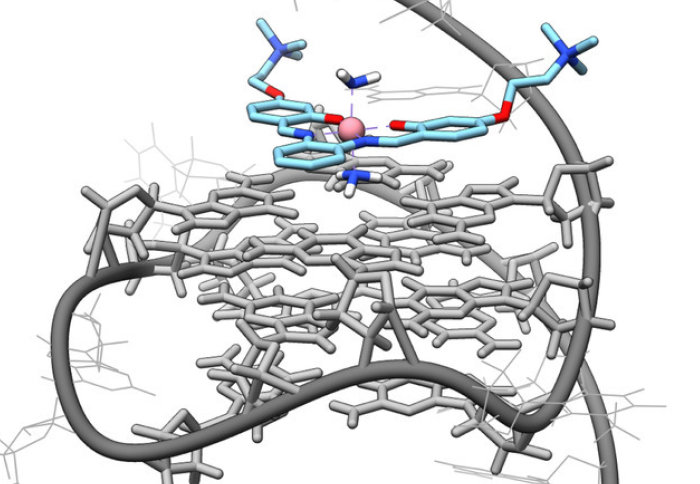New class of molecules explored as binders for knot-like DNA
by Ben Lewis

A new research paper from the Vilar group has expanded our understanding of the types of molecules which can bind to knot-like DNA.
Whilst most DNA forms the well-known double helix structure, G-Quadruplex DNA is a knot-like alternative structure which can also form and is stable in the same conditions as in our cells. Many groups, including Ramon Vilar’s, have been trying to develop tools to study this unusual DNA structure and understand it, or use it to treat disease.
In a new research paper published as a “Hot Paper” in Chemistry - A European Journal, a new class of molecules which can bind to G-Quadruplex DNA have been described. Whilst most molecules which bind to this structure are flat to allow them to stack onto one end of the Quadruplex shape, these new molecules are not. Instead, the paper describes an octahedral shaped metal complex based around a central cobalt (III) ion.
The research was led by Carmen Ruehl of the Vilar group with contributions from Tim Kench and Aaron Lim in the labs of Ramon Vilar and David Mann. They initially hoped to find a complex which would be triggered to bind to Quadruplexes in cells, by converting from an octahedral shape to a flat shape - this would be caused by the low-oxygen environment found in tumour cells and would target the molecule to be active only in cancer cells.
However, they unexpectedly found their initial octahedral molecule also bound to the Quadruplexes too, with the part of the molecule out of the plane slotting into the centre of the Quadruplex according to molecular docking studies.
This research paper opens a new range of potential molecules which could be used to target G-Quadruplex DNA as potential anti-cancer agents. The hope in future will be to make these molecules more selected and targeted towards cancer cells over healthy cells.
Article text (excluding photos or graphics) © Imperial College London.
Photos and graphics subject to third party copyright used with permission or © Imperial College London.
Reporter
Ben Lewis
Department of Surgery & Cancer